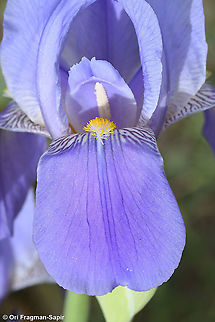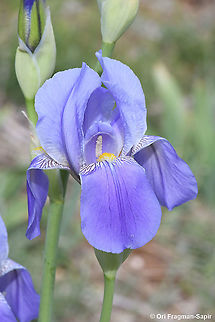
Appearance
It is often confused with ''Iris trojana'' and ''Iris cypriana''. It is also similar in form to ''Iris cypriana'' but outer bract is brown and papery in the upper third only.It is a geophyte, that has thick rhizomes, which are stoloniferous, and semi-buried in the ground.
It has linear, green, or grey-green, glaucous leaves.
The sheathing leaves, can grow up to between 30–70 cm long, and 5 cm wide. The leaves are wider than ''Iris cypriana''.
It has a tall stem, or peduncle, that can grow up to between 90–150 cm tall. It has 2 or 3 branched stems.:123
The stem has broad, spathes , which are green in the lower half, and membranous or brown and papery, in the upper third of the leaf.
The stems hold between 3 and 8, or 9 flowers.:123 Each stem carries 2–3 flowers,:17 at the terminal end of each branch, there is always a single flower per stem.
It blooms early in the season,:17 between late spring and early summer, between May,
and June.
The large flowers, are scented,:123:17 and come in shades of violet, purple,:17 lavender blue , and light blue. There are occasionally bi-toned flowers.
Like other irises, it has 2 pairs of petals, 3 large sepals , known as the 'falls' and 3 inner, smaller petals , known as the 'standards'.:17 The falls are obovate or cuneate , with a white haft , that has bronzy purple veins,:17 or lines. In the centre of the fall, is a row of hairs called a beard, which are yellow, or orange yellow, at the base, turning white at the front of the petal.:17 The standards are obovate or unguiculate , they are paler than the falls,:17 and have a pale haft that is also marked with bronzy-purple.
It has a 1.2–2 cm long perianth tube, which is wider and shorter than the perianth tube of ''Iris cypriana''. It has a rounded ovary, blue-purple style arms, violet crests, white filaments and cream anther.
After the iris has flowered, it produces an oblong or trigonal seed capsule, that is 5–6.5 cm long. Inside the capsule, are large, pyriform , brown wrinkled seeds.
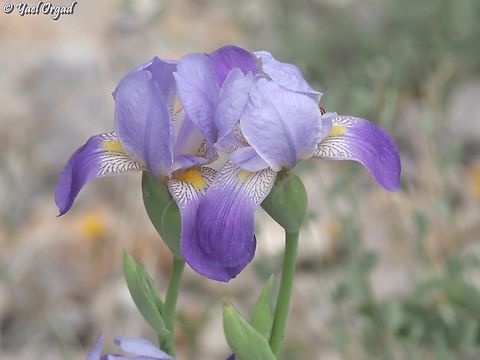
Status
It was thought not to be growing wild,:17 apart from in Israel. Populations can be found on Mount Hermon, where it is listed as common, on Mt. Gilboa and Bet Shean Valley, it is listed as V. Rare.These populations are all protected.
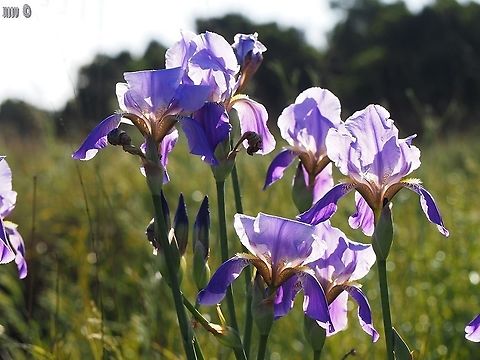
Habitat
It is native to Asia, within the Middle East,:17 or the Levant, .It grows on dry rocky slopes, grasslands, and on the semi-steppe shrublands.They can be found at an altitude of above 600–1,400 m above sea level.
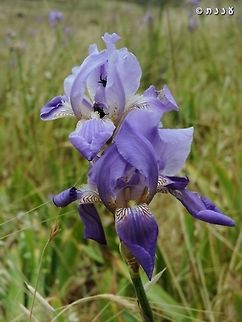
Defense
Like many other irises, most parts of the plant are poisonous , if mistakenly ingested can cause stomach pains and vomiting. Also handling the plant may cause a skin irritation or an allergic reaction.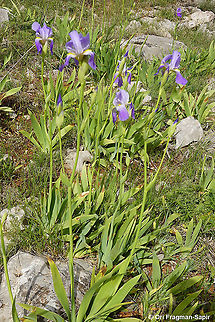
Uses
Iris mesopotamica has been used in the past in folk medicine, for various uses including; treating animals bites and poisons, treating Haemorrhoids and sexual diseases, treating Internal diseases, treating inflammations and skin diseases.The rhizomes also contain a plenty of starch, including isoflavone and essential oils which are used in perfumery, similar to ''Iris florentina''.
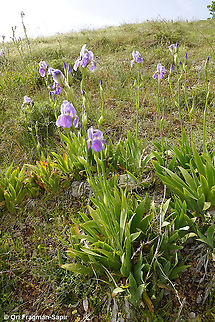
Cultural
In the past, up to hundreds of years ago, in the Levant, Arabs, and Muslims, planted ''Iris albicans'', and ''Iris mesopotamica'' in cemeteries, and graveyards, beside the graves, as an ornamental. Including in Israel, Palestine, North Africa and Syria . Some graveyards and cemeteries were later abandoned, allowing the iris to become naturalised in some sites.The rhizomes of ''Iris bismarckiana'' and ''Iris mesopotamica'' were found planted in the cemetery in Wadi Rajib, near Ein-a-Sahne, under a sacred oak, ''Quercus calliprinos''.
References:
Some text fragments are auto parsed from Wikipedia.
